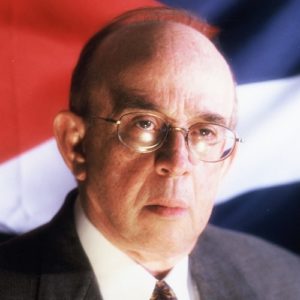Note: Under the auspices of the George W. Bush administration and in the hope that Cuba’s transition to a democratic society would develop within a short time, a major project was started in the 1990s at the University of Miami on Cuba’s need to transition from totalitarianism toward democracy. Some 24 studies were undertaken for the Cuba Transition Project with the participation of important colleagues such as Jeane Kirkpatrick, Irving L. Horowitz, Carmelo Mesa Lago, Carlos Alberto Montaner, Jorge Dominguez, Antonio Jorge, and many others. The following outline represents one of those studies.
* Jaime Suchlicki
INTRODUCTION
Cuba survived the severe shock inflicted by the loss of assistance from the Soviet Union with the help of a partial tactical shift toward structural liberalization and macroeconomic stabilization in the early 1990’s. Since then, the momentum of reforms has been lost and the downward trend in investment, a deteriorating infrastructure and a decline in tourism has sharply reduced Cuba’s productive capacity. A stagnating economy unable to cope with its large domestic and foreign liabilities has characterized the last two decades. A full fledge reform must take place – one that will eliminate the institutions of centralized control and create new institutions that will sustain an efficient, private sector economy.
The kind of obstacles that Cuba will face in the post-Castro era will be complex indeed. Elements such as laying the basis for fundamental political or social institutions building and modernization will occupy the attention of statesmen for years to come. Designing an appropriate blueprint for economic recovery, development and global competitiveness will require an intimate knowledge of Cuba as well as the ability and willingness to devise innovative solutions.
It will be necessary to articulate a feasible and integrated strategy of nation building, social reconstruction, and development, with its various elements advancing in a parallel, mutually supportive fashion, to be carved out within a reasonable timeframe. Balance, sequencing, and a delicate equilibrium will be necessary traits of the pathway for such a multiple and complex kind of transition process.
I. Measures to transform and modernize the Cuban economy will include.
- Price liberalization and exchange rate unification.
- Increasing public and private salaries and pensions.
- Encourage the entry of new enterprises both foreign and domestic.
- Reducing the corporate tax burden, cutting red tape, and improving the legal framework.
- Privatizing state enterprises.
- Resolving the claims of nationals and foreigners on assets expropriated by the Cuban government since 1959, and the reinstitution of private property rights.
- Renegotiating Cuba’s high external debt.
- Keeping inflation under control. Aim at tax and expenditure systems that maximize efficiency and accountability.
- Improving Cuba’s rudimentary banking system. A new financial reform law is needed that would stress privatization, deregulation, and free entry.
- Transforming the agriculture sector.
- The labor market should be restructured to increase greater fairness and productivity.
II. Constitutional framework for a transition in Cuba.
A post Castro provisional government, one committed to ushering in a real transition to representative democracy and not a mere succession with cosmetic changes to the current regime – will have to decide which constitutional framework to adopt prior to free elections. This crucial decision would cast the fate of the transition and largely determine its success or failure in creating the necessary climate to steer a just and orderly changeover.
Broadly speaking there are three possible transitional options. 1) reform the existing Marxist Constitution imposed by the Castro regime, 2) draft a new constitution or 3) reinstate the applicable provisions of Cuba’s legitimate Constitution of 1940. Each of these options has its problems and shortcomings. Yet the creation of constitutional framework to bridge the gap between totalitarianism and democracy, legitimized by free elections, will be the underpinning for an orderly and peaceful transition.
*Jaime Suchlicki is Director of the Cuban Studies Institute, CSI, a non-profit research group in Coral Gables, FL. He is the author of Cuba: From Columbus to Castro & Beyond, now in its 5th edition; Mexico: From Montezuma to the Rise of the PAN, 2nd edition, and Breve Historia de Cuba. From 1967 till 2017 he was a professor at the University of Miami and Director, Institute for Cuban and Cuban-American Studies which developed the Cuba Transition Project.








